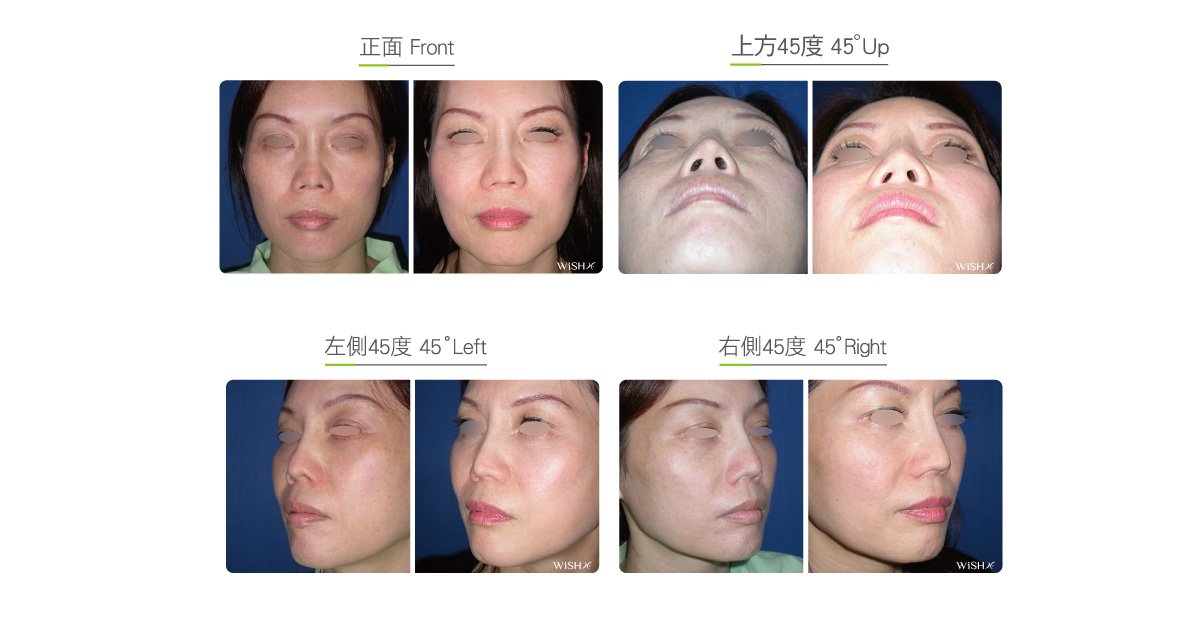Alar Reconstruction
This surgery is also called “alar enlargement surgery”, which is for reconstruction due to the complications of alar plastic surgery. It is indicated for patients who have already undergone alar reduction but suffer from alar deformity or collapse due to the excess resection of tissues or alar contracture due to traumas. The ala nasi of these patients is characterized by a disproportionate size compared with the nasal tip from the frontal view and loss of normal arc or oval shape from the bottom view, with the nostrils shaped like an unnatural triangle. Moreover, some patients have a concurrent disturbance in respiration or difficulty in cleaning the nostrils, which are severe complications due to excess alar reduction. For surgical methods, the following options are available based on the severity of patient conditions:
- Medpor alar implant for lateral crus reconstruction
An Medpor lamina with a 1-mm thickness is utilized to sculpt the alar ring and is implanted into the medial nostrils from the nasal tip to the alar foot to reproduce the circular or oval shape of the ala nasi, which also enlarges the respiratory pathway of the nostrils. This surgery shows immediate and significant results but has drawbacks in that patients may suffer from foreign body irritation and need time to get accustomed to it. In addition, patients are requested to abstain from rubbing the ala nasi to avoid inflammation incurred by the Medpor implant. - Composite ear cartilage graft for alar base reconstruction
For some patients with severe alar shrinkage or collapse, besides the above-mentioned Medpor alar implant, a composite auricular cartilage should be transplanted to the inferior margin or medial side of the alar foot to restore the alar skin excessively resected for increasing the actual distance between the nasal columella and alar foot (nostril width) and substantially enlarging the nostrils. This surgery is advantageous because there is no possible infection or foreign body reaction to the autologous tissues. It is also disadvantageous because of the risks of autologous resorption or heterogeneity as well as the color difference between the transplanted composite graft and the original alar skin or scar hypertrophy.
Surgical conditions
Duration
- Type of anesthesia: IV sedation + local anesthesia
- Surgical incision: Inside the bilateral nostrils or at the alar feet
- Recovery: 5–7 days
- Removal of stitches: 7–10 days
General instructions
No food and water on the day of surgery
- Do not smoke for 1 week on the day of operation.
- Avoid stretching the ala nasi such by forcibly opening the mouth or laughing.
- Avoid smoking and alcohol and impacts to the nasal tip for 3 months postoperatively, and clean the intranasal wound in the morning and evening every day.
Ideal candidates
- Patients with nostril collapse or deformity due to failure of the prior alar reduction
- Those with an unnatural nostril shape due to the excessive resection of alar skin
- Those with alar tissue contracture or defects because of traumatic repair
- Those with a disturbance in respiration or difficulty in cleaning because of an exceedingly small ala nasi and nostrils
Potential complications
- Scar proliferation
- Poor wound healing
- Autologous resorption
- Asymmetrical nostrils
- Foreign body reaction or infection of implant
Surgical advantages
-
It is able to enhance the upper rim support of the ala nasi and improve functional disorders such as disturbance in respiration.
-
It is able to brace up the ala nasi to restore the natural oval shape of the nostrils.
-
It is able to increase the width between the nasal tip and bilateral ala nasi to redress the excessively narrow ala nasi.
Surgical drawbacks
-
Confined by the tension of individual alar skin, the surgery may be unable to achieve complete correction.
-
The use of a Medpor implant may result in discomfort or prosthesis infection.
-
The use of a composite auricular cartilage may lead to autologous resorption or difference in skin color.
-
The scar at the graft site of the alar feet may be relatively obvious.

